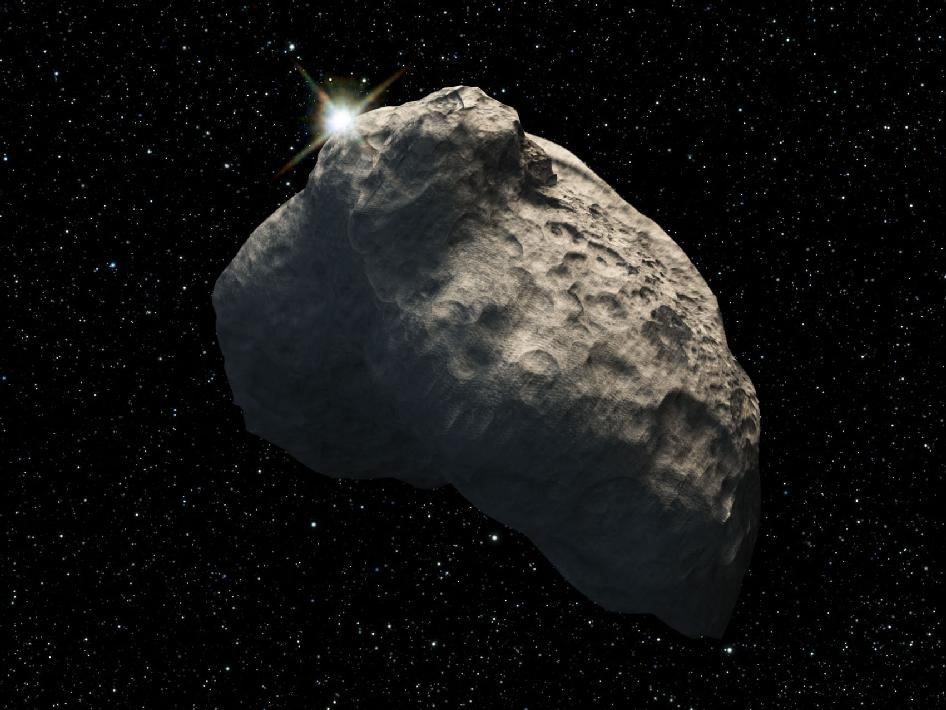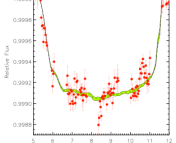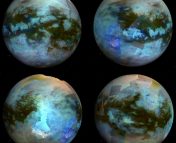Title: Discovery of a Makemakean Moon
Authors: Alex H. Parker, Marc W. Buie, Will M. Grundy, Keith S. Noll
First author’s institution: Southwest Research Institute, USA
Status: Submitted to ApJL
Our knowledge about the Solar System is frequently changing. Just a few years back, we had nine planets. Then Pluto was downgraded and we ended up with only eight. Finally, a few months ago, it turned out that we might actually have nine, but Pluto is still not one of them. The downgrading of Pluto, despite causing lots of commotion in defense of the now dwarf planet, was actually a decision well-founded scientifically. Calling Pluto a planet was unfair to other dwarf planets in the Solar System, such as Eris, which is actually more massive than Pluto and only slightly smaller. Another such dwarf planet is Makemake, which is a protagonist in the latest discovery in the Solar System: a new moon.
Makemake is the largest known Kuiper Belt Object (KBO), and the second brightest trans-Neptunian Object (TNO). It is the only one among the four recognized trans-Neptunian dwarf planets without a known satellite. This suggested Makemake had avoided any sort of giant impact event in the past. The authors of today’s paper decided to further investigate, and determined that Makemake has in fact a satellite, making our Solar System family yet bigger.
The authors observed Makemake using the Hubble Space Telescope (HST). Their intention was to observe the satellite, so their observations were carefully planned to be able to detect satellites fainter than previous search programs. HST imaged Makemake in 2015 on two occasions: first on April 27 for over two hours, then again on April 29 for a bit less than two hours. In all six images collected on the first visit, a faint source is visible right above Makemake (see Fig. 1). During the observation, Makemake moves about 4” with respect to background sources, and the fainter source moves along with it. Weirdly enough, such faint source didn’t appear on the second visit at all.

Figure 1: Six images obtained by Hubble showing the newly discovered Makemakean moon (indicated by a red arrow on the first image). Makemake was the only trans-Neptunian dwarf planet without a known moon, until the authors of today’s paper decided to have a better look at it.
Instead of lamenting over it, the authors decided to verify if such a faint target as seen in the first observation would also be detectable in a second one. They inserted synthetic satellites, described by a point spread function (PSF), on the images of the second visit and estimated how faint a source would have to be to escape detection. They concluded that even sources fainter than the first detection by up to 2.5 magnitudes could be detected. So could the detection on the first visit be a false positive? The authors considered the possibility that the observed source was another TNO crossing, by chance, on the same line of sight as Makemake. Given the density of objects in the Kuiper Belt at Makemake’s position, which was estimated by the Canada France Ecliptic Plane Survey, they found that the odds of a source similarly-bright or even brighter than the detected falling within an arcsecond of Makemake is less than one in 107.
Besides the non-detection on the second visit, the authors estimated that at least one other past observation would also be able to detect the source. These two non-detections are interpreted as indicating that the satellite, so far called S/2015 (136472) 1 (let’s hope for a cooler name in the future!), spends a large fraction of its time close to Makemake, likely in an edge-on orbit. This actually would explain one mysterious thing about Makemake: thermal observations with both the Spitzer and the Herschel space telescopes indicated that there were at least two different components contributing to the spectral energy distribution of the dwarf planet. The majority of the emitting surface appeared very bright, but a small component was very dark. No good explanation had been found for that behavior yet, but the authors interpret that the dark component could actually be explained by the new found moon observed in a transit. Why the moon would have such different composition from its host is still an open question. It can be that it is a captured object rather than a result of a giant collision, it could also be an indication that Makemake had an atmosphere which interacted with the moon and made it darker.
This is not the only open question. The observations were not enough to put strong constraints on the moon’s orbit, so the authors only made some crude estimates. For example, assuming a prograde circular orbit, orbital periods between 12.4 and 660 days could fit the observed data. Another thing they could not estimate because the orbit is undetermined was Makemake’s mass. We actually only know an upper limit to Makemake’s mass, based on its influence on neighbor objects, because it cannot be properly estimated without a satellite. This brand new discovery will provide an answer to that, and help us understand more about these distant TNO objects. We just have to point our telescopes there a few more times, so stay tuned!




